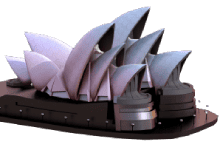Whether you’re making a cake or building a treehouse, you should have an idea of what the finished product will look like before you begin, so why should putting up your website or writing a blog entry to be any different? A content outline is a roadmap that helps you visualise and plan every aspect of your project. Keep these easy principles in mind as you develop your content to help readers grasp your subject more easily.
Know Your Audience
It’s critical to understand your audience before you can tailor content to a specific group of people. What do they want, need, or anticipate from your page? If your blog is primarily about cooking and provides readers with ways to modify recipes or advice on how to cook, they’ll expect more of that in the future.
However, knowing the sort of material that people are searching for isn’t always sufficient. Do you know what age your consumers are? Have you taken into account their lifestyles or kitchen-related skills? Finding out these facts will assist you in writing and provide you with a better idea of the most relevant topics to cover.
Brainstorm Ideas
Decide what pages on your website you’d like to use (e.g., Homepage, Services, About Us), as well as the themes you want to address in your essay. Decide which major points are most essential to your site’s visitors so you can be sure to give them exactly what they want and need.
Even if you provide all of the information that your audience might want, it’s important to consider what additional information they may need. For example, when writing a blog article about music for an audience with little prior knowledge of the band you’re discussing, they’ll probably want to know who the group is, background information on the band’s history, examples of songs they could listen to, and details about comparable performers. This also applies if you make your own music website; be sure to include all the pertinent data your fans (or potential fans) will care about.
Organise Your Thoughts
Imagine you’re about to write an essay. Breaking down your ideas into smaller parts makes it more practical to organise them rather than dumping everything in one big lump of text. Make each main point you plan on discussing its own section, then get a little more detailed. Consider the specifics of the data you want to convey within each category. Whatever works best for you, format it as your outline; use it to clearly and completely review your thoughts. This is yours, so make it whatever style works best for you and allows you to easily and thoroughly sort through your ideas.
For example,
- Introduction to the band
- Band’s name
- History of the band
- When the group formed
- Where the members are from
- Band’s music
- How many albums they have
- Each album and the year it was released
- Their most popular songs
- Why other people may like the band
- Similar genres
- Ways people can listen to the band’s music
Having a visual of all your data allows you to organise your effort. It won’t make sense to your reader if you discuss your subjects out of sequence. Keep in mind that the primary goal of a content outline is to order your ideas so that you can construct a clear picture of the information disseminated through your website, piece, or other platforms.





